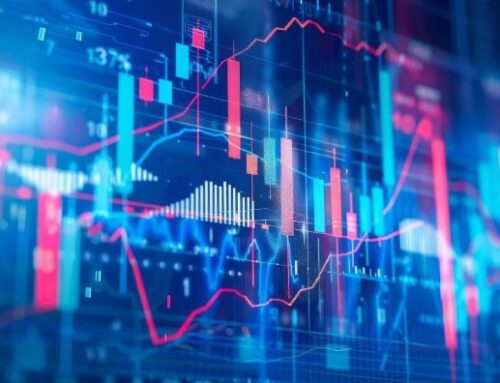
The “term premium” in savings has gone missing from certain investments as interest rates have risen. Traditionally, this term premium represents additional compensation to investors for investing in longer-term investments, such as bonds. Currently, there is less incentive to save money in long-term investments and greater yield in short-term ones. Short-term rates exceeding long-term rates are certainly not normal occurrences, but they can happen. It is often part of a cycle that may signal that the economy has become overheated in the short run.
The most recent historical example of a cycle like this is in the events leading up to the 1980s. However, this experience isn’t quite the same because the United States isn’t directly involved in many wars, which was the case at that time. The US economy ended up with inflation because too much money started circulating without enough productive resources available to absorb the surplus. The good news is that this feels like an engineered problem and, in theory, it should be reversible given enough time. The problem is that people worldwide feel the effects when the Federal Reserve turns the dial too hot and too cold. And, certain groups of people feel these impacts disproportionately more than others, especially in developing (emerging market) regions.
Interest rate policy designed to push short-term rates up above long-term rates (which is known as an “inverted yield curve”) generally does not occur by accident. The Federal Reserve is a significant contributor, but so are regular investors who cannot afford to lose purchasing power on new money that enters the market. Moreover, since the current expectation is for high inflation today and lower inflation later, investors may not require as high of a premium to store money away in longer-term investments. Therefore, as the disinflationary process continues, short-term interest rates should start to move lower and, one day, short-term rates should end up below the long-term rates again.
As for now, higher short-term rates can serve two critical purposes to remove inflation from the economy. First, the high short-term rates can make it more costly for banks to use overnight reserves. The overall impact is a slowdown in bank lending, which can then hit spending. Second, high short-term rates can present a significant opportunity cost for people with money to spend rather than save, especially when the general belief is that high inflation rates won’t last. In the meantime, as long as investors sense less uncertainty regarding future price increases, they can save income and earn a decent return instead of spending that money. So, within reason, higher short-term rates can have a particularly adverse effect on economic spending. Therefore, individual choices that find savings more attractive when short-term rates are high may partially explain why inverted yield curves tend to pre-date recessions.
Another possible explanation for the lost-term premium is that the economic risk of loss is currently higher now in the short-term relative to the long run. As a result, short-term expected returns need to be higher to incentivize risk-taking. Therefore, the downward nature of the yield terms wouldn’t just exist in bonds but in other assets that have a long time horizon, such as stocks. The stock market’s volatility index is a great place to observe a negative term premium in stock returns. The volatility index reports high standard deviations currently but seems to indicate that risk is likely to decay as time passes. Consequentially, expected stock returns may appear better today as a tradeoff for accepting more risk in the short-term relative to the long term. This is one of the major reasons why stock markets tend to generate strong returns in short periods following bear market periods.
Much of the current concern regarding savings, lending, income, and spending is focused on the short-term, and not as worrisome further out in time. Again, these developments are often found during periods of economic slowdowns. Over time, we expect many of today’s economic experiences and challenges to smooth out, which should restore the term premium. As a reminder, investment markets are traditionally viewed as a leading economic indicator, which means investment returns often foreshadow what is to come in the economy. Although 2022 resulted in a challenging investment environment, it has indicated some level of economic slowdown. This also often results in investments beginning to generate stronger returns during periods of economic slowdowns, as they forecast better economic periods.
Please raise your hand if you want to chat about your portfolio. And feel free to share this market review with someone you know who might be able to benefit from this information.
Source: Advisory Alpha
https://www.advisoryalpha.com/market-review/the-current-rate-cycle
All written content is for information purposes only. It is not intended to provide any tax or legal advice or provide the basis for any financial decisions.
The information contained herein is not an offer to sell or a solicitation of an offer to buy the securities, products or services mentioned, and no offers or sales will be made in jurisdictions in which the offer or sale of these securities, products or services is not qualified or otherwise exempt from regulation.
The information contained in this material has been derived from sources believed to be reliable, but is not guaranteed as to accuracy and completeness and does not purport to be a complete analysis of the materials discussed.
Advisory Alpha, LLC and Horizon Financial Services, LLC are not affiliated.










